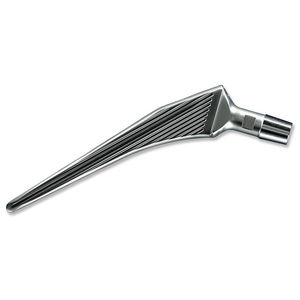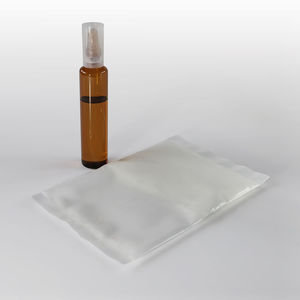
- Secondary care
- Orthopedic surgery
- Cemented acetabular prosthesis
- Gruppo Bioimpianti
Cemented acetabular prosthesis MULLER
Add to favorites
Compare this product
Characteristics
- Fixation type
- cemented
- Acetabular cup diameter
Max.: 64 mm
(2.52 in)Min.: 28 mm
(1.1 in)
Description
Muller cups are characterized by their hemispherical shape made entirely of ultra-high molecular weight polyethylene (UHMWPE).
The cups are designed to be cemented, which is why their convex outer surface has a special grooved design, aimed at improving the primary fixation of the cup itself.
Primary fixation takes place between the cup and the acetabular cavity, previously filled with cement. The purpose of the grooves on the external surface is to increase the useful surface in contact with the acetabulum, thus providing greater external adhesion and limiting the incidence of possible micro-movements that could cause mobilization.
The hemispherical design also maximizes the preservation of bone stock, allowing even distribution of bone load thanks due to the close contact between the cup and the acetabular cavity.
All cups have a marker ring in order to provide the surgeon with an indicator for correct positioning of the cup in the acetabulum. Since UHMWPE is a radiolucent material, the radio-opaque ring is necessary for subsequent post-operative checks.
Materials:
The main component of the cup prosthesis is made of ultra-high density polyethylene UHMWPE (ISO 5834/2). The radiological reference ring is made of stainless steel (ISO 5832/1).
Standard Muller cup
The holes on the outer rim (three in the case of the standard Muller, Snap-Fit and Double Snap-Fit cups, one in the case of the Muller with Shoulder) are useful for placing surgical instruments, facilitating their positioning, orientation and pressure on the acetabulum.
Catalogs
No catalogs are available for this product.
See all of Gruppo Bioimpianti‘s catalogsRelated Searches
- Bone plate
- Compression plate
- Metallic compression plate
- Compression bone screw
- Metallic compression bone screw
- Arthrodesis nail
- General purpose compression bone screw
- Femoral stem
- Metallic intramedullary nail
- Cannulated compression bone screw
- Non-locking compression plate
- Proximal fixation intramedullary nail
- Knee prosthesis
- Acetabular prosthesis
- General purpose compression plate
- Femoral intramedullary nail
- Cementless femoral stem
- Titanium intramedullary nail
- Press-fit acetabular prosthesis
- Cancellous compression bone screw
*Prices are pre-tax. They exclude delivery charges and customs duties and do not include additional charges for installation or activation options. Prices are indicative only and may vary by country, with changes to the cost of raw materials and exchange rates.

















